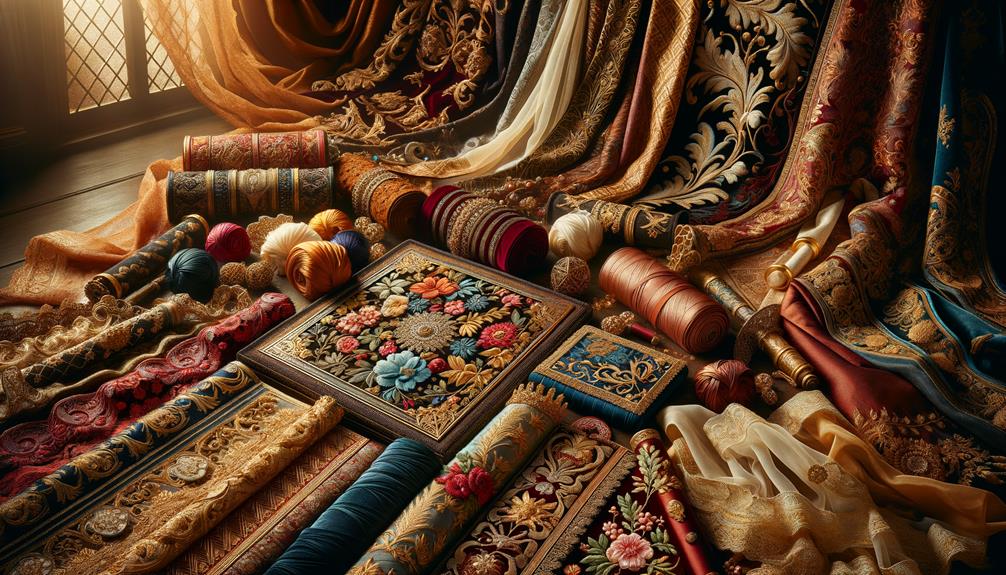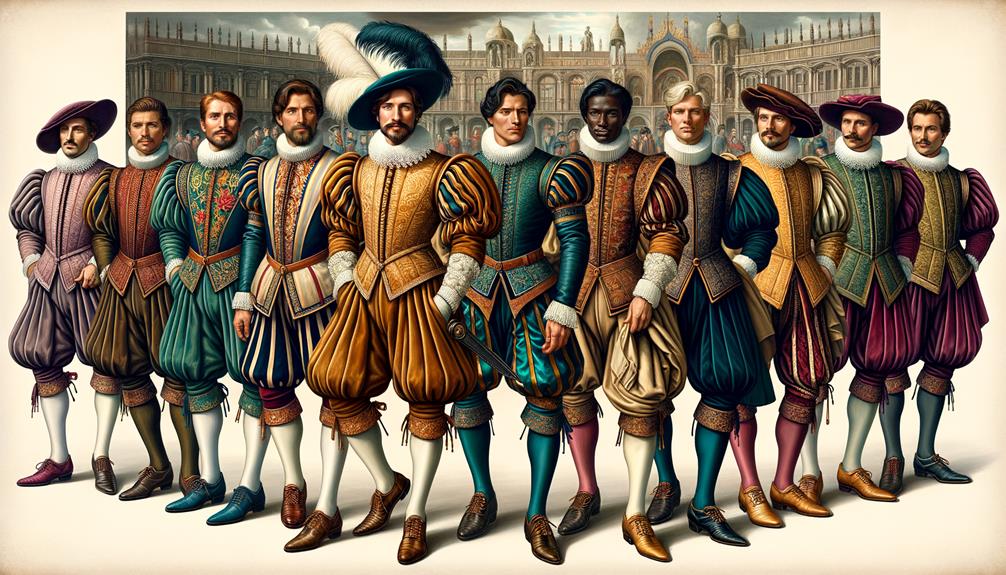In Renaissance literature, clothing serves as a powerful symbol of social standing and personal identity. The attire of characters not only reflects their social status but also reinforces societal norms and traditional gender roles. Luxurious fabrics and opulent garments typically signify wealth, power, and nobility, while simpler attire is often associated with lower social classes. The choice of clothing also reveals character traits, exploring power dynamics and social hierarchies. Furthermore, clothing is deeply intertwined with memory and identity, offering valuable insights into the societal structures of the time. By examining the role of fashion in Renaissance literature, we can gain a deeper understanding of the themes and values that shaped the era.
Clothing and Identity
In Renaissance literature, clothing is more than just fabric – it's a powerful symbol of identity and social standing. Authors meticulously describe characters' attire to reveal their personalities, backgrounds, and societal positions. Each garment choice reflects societal norms, illustrating accepted behaviors and expectations.
Clothing in these literary works often defines gender roles, highlighting the distinct boundaries between male and female characters. Men's attire, typically more elaborate, signifies authority and control, while women's clothing, often restrictive, symbolizes their limited autonomy and adherence to societal expectations. These choices aren't merely decorative but are infused with deeper themes that question and critique these roles.
Through clothing symbolism, Renaissance literature examines power dynamics. Characters' interactions and perceptions are influenced by their outward appearances. A rich fabric or a specific style can elevate a character's perceived power, while simpler clothing might indicate subservience or marginalization. This nuanced approach to clothing and identity allows for a richer understanding of the characters and the societal structures they inhabit, revealing the complex nature of power and perception in Renaissance society.
Power and Attire
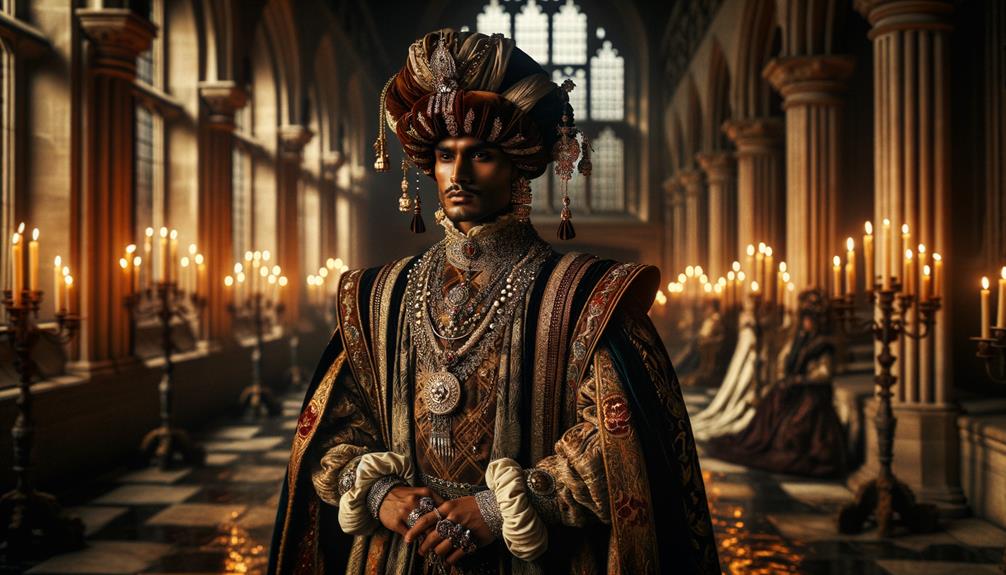
Renaissance literature intricately weaves clothing with power, showcasing how attire serves as a potent symbol of social hierarchy and authority. The depiction of clothing isn't merely decorative; it anchors the narrative in the power dynamics and societal roles of the time. Authors skillfully use attire to reflect characters' social status and identity, making clothing a key element in understanding the cultural norms and societal expectations of the Renaissance.
Clothing plays a significant role in conveying social standing, with opulent garments often signaling nobility and power, while simpler attire denotes lower social status.
Through descriptions of attire, Renaissance authors reveal much about a character's ambitions and personal identity.
Attire helps define a character's place and role within the societal structure, providing insight into the cultural norms and expectations governing behavior during the Renaissance.
Examining these elements reveals how Renaissance authors employ clothing as a multifaceted tool. Attire isn't just an external adornment; it's deeply intertwined with character aspirations and societal roles. By examining these literary depictions, we gain valuable insights into the complex interplay between power, identity, and societal structure during this vibrant period.
Textiles in Literature
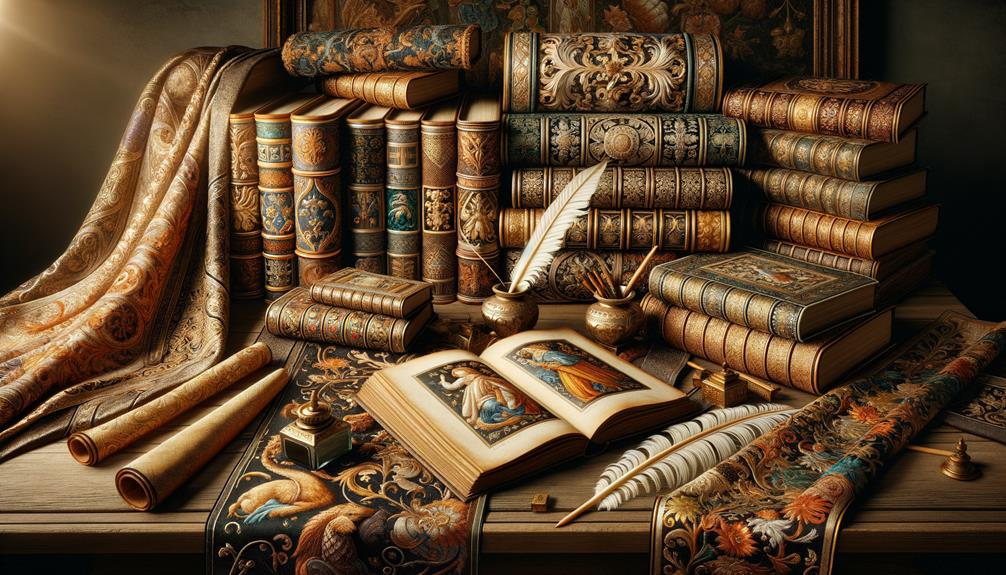
Textiles in literature often convey subtle yet powerful messages about social status and personal wealth, subtly revealing much about characters and the societies they inhabit. In Renaissance literary works, descriptions of textiles are meticulously crafted to highlight the opulence and luxury associated with certain characters. Authors like Shakespeare and Petrarch frequently use references to silk, brocade, and velvet to evoke a sense of grandeur and affluence.
Clothing choices are not merely decorative but are deeply intertwined with character traits and societal norms. For instance, Shakespeare's use of rich textiles in the attire of nobility underscores their elevated status and immense wealth. Similarly, Petrarch's lyrical descriptions often envelop his subjects in sumptuous fabrics, reinforcing their distinguished positions within the social hierarchy.
These luxurious textiles serve to highlight the stark contrasts between different strata of society, reflecting cultural values and fashion trends of the Renaissance period. The careful selection of fabrics in literary works provides a window into the intricacies of social status and the implicit character traits that accompany wealth. Textiles, in this manner, become a silent yet powerful narrative device, articulating the societal norms and hierarchical structures that define the Renaissance epoch.
Fashion and Memory
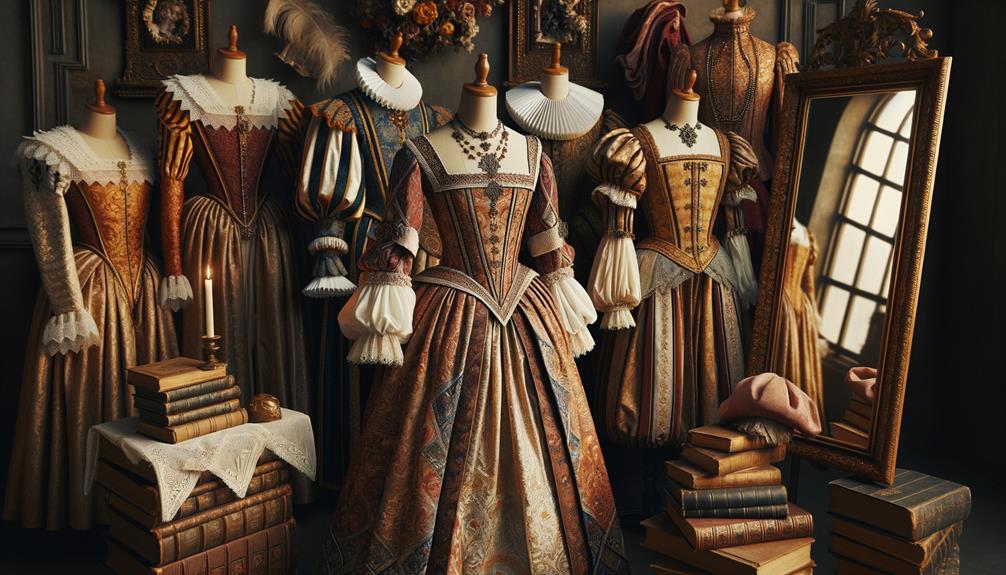
Fashion in literature often serves as a powerful trigger for memory, capturing characters' identities and historical contexts with remarkable precision. In Renaissance literature, clothing choices are meticulously described to reflect not just the social status and personality of characters but also the broader societal norms and cultural values of the time. These descriptions serve as potent storytelling tools and memory aids.
When examining Renaissance fashion in literature, several key elements emerge:
- Social status: The opulence or simplicity of attire often indicates a character's place within the societal hierarchy.
- Personality: Distinctive clothing styles or colors can highlight unique character traits or inner emotions.
- Historical context: Fashion details anchor the narrative in a specific era, enriching the reader's understanding of the period.
- Societal norms: Attire can signify adherence to or rebellion against contemporary cultural values and expectations.
Through the lens of fashion, authors craft intricate portraits of their characters, embedding layers of meaning that transcend mere appearances. This interplay between clothing and memory underscores the transformative power of self-expression amid societal expectations. Renaissance fashion in literature becomes a conduit for exploring identity, storytelling, and the historical and cultural fabric of the era.
Interdisciplinary Insights
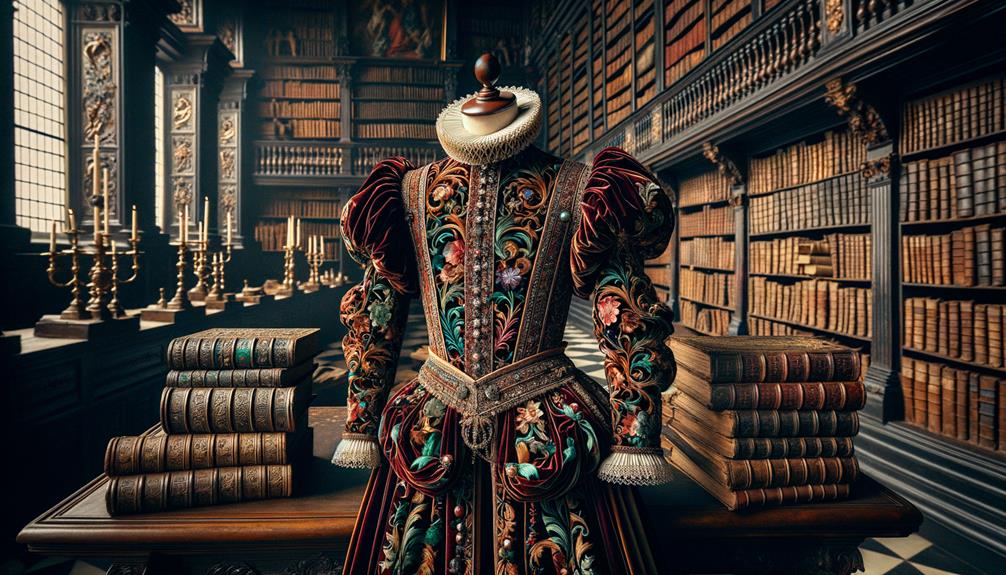
Stallybrass and Jones' interdisciplinary approach reveals how clothing in Renaissance literature serves as a nexus of identity, power, and memory. Their book explores Renaissance Clothing through an analysis of literary texts, paintings, and textiles, illustrating the significance of clothing in shaping perceptions of wealth and status.
Renaissance Clothing | Insights
— | —
Upper-class women | Represented wealth and social standing
Marriage | Clothing symbolized family wealth
Fashion designers | Influenced literary portrayals
Identity | Constructed through attire
The book's 58 illustrations of textiles and clothing provide a tangible connection to the era's fashion, enhancing our understanding of how garments communicated social hierarchies. For instance, the attire of Upper-class women not only reflected their wealth and social standing but also played a crucial role in marriage negotiations, serving as a visible symbol of family wealth.
Stallybrass and Jones' interdisciplinary insights reveal that fashion designers of the time had a significant impact on how clothing was depicted in literary texts. These portrayals, in turn, shaped contemporary and subsequent understandings of identity and social power. By examining these varied sources, the book offers a fresh perspective on the cultural and social roles that Renaissance Clothing played, making it a cornerstone for anyone interested in the intersection of literature, fashion, and social history.
Frequently Asked Questions
What Does Renaissance Mean in Literature?
In literature, the Renaissance marks a cultural resurgence that spanned from the 14th to 17th centuries, characterized by a focus on humanism, individualism, and classical revival. Writers such as Shakespeare and Dante delved into complex characters and emotions, significantly influencing the development of vernacular languages.
What Was the Style of the Renaissance?
The Renaissance style was characterized by opulence and intricacy, often featuring lavish fabrics and elaborate designs. For men, fashion staples included doublets and codpieces, while women wore tightly fitted bodices and full, flowing skirts. In contrast, the lower classes opted for more practical and durable clothing.
How Did the Renaissance Change Beauty Standards?
In Renaissance portraits, a striking 80% featured symbolic elements highlighting virtues. During this era, beauty standards shifted to link physical appearance with inner moral qualities, influenced by Petrarch's poetry and cultural practices that emphasized both physical and moral attractiveness.
What Are Renaissance Dresses Called?
Renaissance women's fashion featured gowns or kirtles, characterized by ornate bodices and full, flowing skirts. These garments often came with layered accessories, showcasing the wearer's social status and wealth. During this period, styles like farthingales and ruffs were also popular, serving as status symbols.



